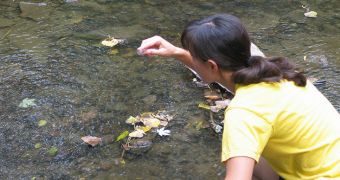In the new investigation, scientists determined that lakes and reservoirs which exhibit musty or earthy odors, as well as evidence of bacterial infestation, tend to have water with a very poor quality.
The research was conducted by investigators at the United States Geological Survey (USGS), who say that glue-green algae can produce blooms on the surface of the water.
These blooms are visible with the unaided eye, as they appear as a layer of greenish foam in lakes, reservoirs and water tanks. They are usually a sign that something is wrong, experts say.
These microorganisms, which are also known as cyanobacteria, are known to produce harmful cyanotoxins, substances that can become dangerous when they accumulate in humans.
The new USGS report is focused on analyzing Midwest lakes, in which the presence of cyanotoxins has been directly associated with the presence of cyanobacteria in the water.
In other words, it would appear that odors can indeed serve as a warning sign that something is wrong with the waters. Those in charge of testing its quality should always keep “nose out” for such signs.
“It is commonly believed that there are no health risks associated with taste-and-odor compounds,” says USGS limnologist Dr. Jennifer Graham.
“While taste-and-odor compounds are not toxic, these pungent compounds were always found withcyanotoxins in the blooms sampled,” adds the expert, who was the lead scientist on this study.
“This finding highlights the need for increased cyanotoxin surveillance during taste-and-odor events so that the public can be advised and waters can be effectively treated,” she goes on to say.
Experts say that cyanobacteria infestation is usually easy to spot. The microorganisms produce blue-green, red or brown film-like layers on the surface of the water. Most common, the films appear in the summer.
People, aquatic life, pets and livestock are equally affected by cyanobacteria, scientists say, which is precisely why they should be eradicated as soon as they are discovered.
However, this is very time-consuming process, that requires numerous resources be alloted to it. “Exposure to these toxins has caused a range of symptoms including skin rashes, severe stomach upset, seizures, or even death,” adds Dr. Keith Loftin.
He is a research chemist and environmental engineer at the USGS, and was also a member of the group that conducted the investigation.
“Pets and livestock are most susceptible to direct exposure, but people can also be affected during recreation, by eating contaminated foods, or by drinking contaminated water that has not been treated properly,” he adds.

 14 DAY TRIAL //
14 DAY TRIAL //